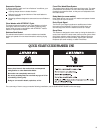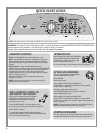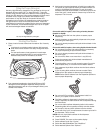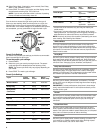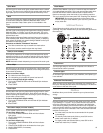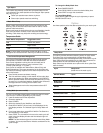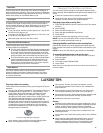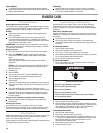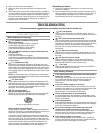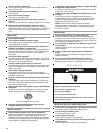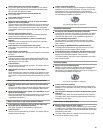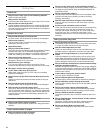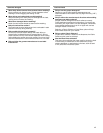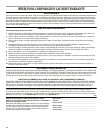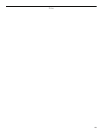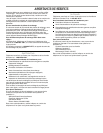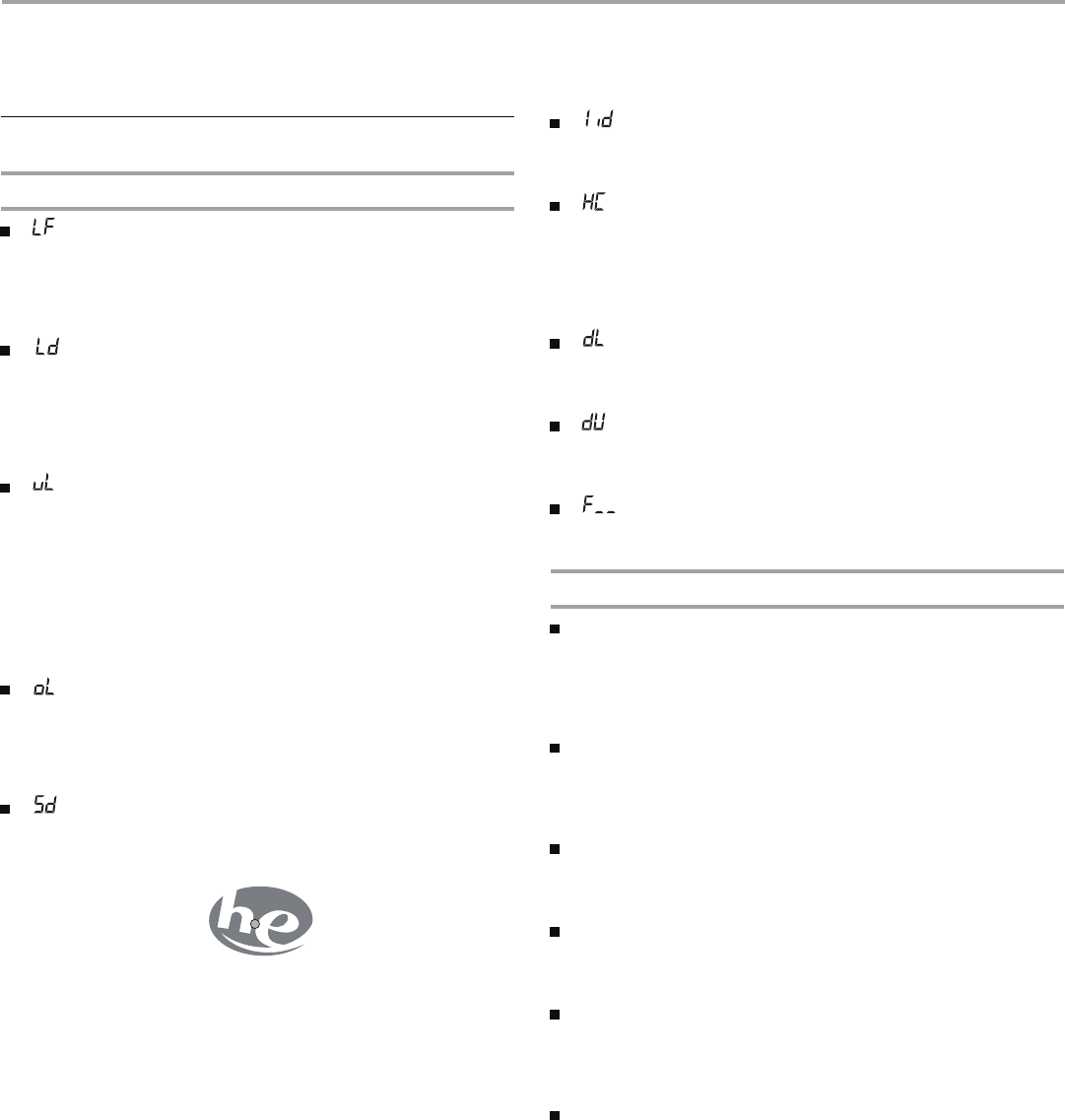
13
6. Place the inlet hoses into the basket.
7. Drape the power cord and drain hose over edge into the
basket.
8. Place foam packing ring from the original shipping materials in
the top of washer. If you do not have the original foam packing
ring, place heavy blankets, towels, etc. into basket opening.
Close the lid and put a piece of tape over the lid and down to
the front of the washer. Keep lid taped until the washer is
placed into the new location.
Reinstalling the washer
1. Follow the “Installation Instructions” to locate, level, and
connect the washer.
2. Run the washer through the Bulky Items/Comforters cycle to
clean the washer and remove the antifreeze, if used. Use only
HE High Efciency detergent. Use ½ the manufacturer’s
recommended amount for a medium-size load.
TROUBLESHOOTING
First try the solutions suggested here and possibly avoid the cost of a service call...
Washer and Components
Washer displaying code messages
“LF” (Washer is taking too long to ll)
Check the following:
Are the water inlet hoses kinked or clogged?
Are the water inlet valve screens clear?
Press PAUSE/CANCEL to clear display.
Is the drain hose installed properly?
“Ld” (Washer is taking too long to drain water from
the wash tub)
Check the following:
Is the drain hose kinked or clogged?
Is the drain hose installed properly? See “Connect the Drain
Hos
e” in the Installation Instructions. Press PAUSE/CANCEL
to clear display.
“uL” (Unbalanced Load)
If the load is unbalanced, the washer will display this code
while running an imbalanced load correction routine at the end
of the wash cycle and before the nal spin. If the code remains
and the wash cycle dial is ashing after the recovery routine
has stopped, open lid and redistribute the load. Close lid and
press START.
NOTE: For best
performance, load garments in loose heaps
evenly around the basket wall. Do not load above the stainless
steel portion of the basket.
“oL” (Over Load)
Is the washer overloaded? The washer has attempted to ll
and begin the wash cycle. If the washer is overloaded, it will
drain any water and detergent that was added during the ll.
To correct the overload, remove several items and add
detergent. Close lid and press START.
“Sd” (Suds Detected)
Did you use regular detergent?
Regular or hand-washing detergents are not recommended
for this washer. Use only High Efciency (HE) detergent.
Use only HE High Efciency detergent.
Did you add too much detergent?
Always measure detergent. Follow detergent manufacturer’s
directions. Remember, concentrated detergents such as 2x or
higher will use less detergent based on load size.
If excessive suds are detected, the
washer will display this
code while running a suds reduction correction routine at the
end of the wash cycle. The suds reduction routine removes
extra suds and assures proper rinsing of your garments. If the
code remains and the wash cycle dial is ashing after the
recovery routine has stopped, re-select your desired cycle
using cold water. Press START. Do not add detergent.
“lid” (Lid Opened)
Is the lid open? Close the lid to clear the display. If the lid
remains open for more than 10 minutes, water in the wash tub
will drain.
“HC” (Cold and Hot hoses switched)
This code will appear at the end of the wash cycle to indicate
that the cold and hot water inlet hoses are switched. If an error
code does not appear but you are experiencing poor washing
performance, check to see whether the inlet hoses are
reversed. See “Connect the Inlet Hoses” in the Installation
Instructions.
“dL” (Door/Lid cannot lock)
Indicates lid is not locked. Check for items caught in the lid
keeping it from closing. Press PAUSE/CANCEL once to clear
the code.
“dU” (Door/Lid cannot unlock)
Is there excessive weight on the lid, such as a basket of
laundry? Excessive weight will keep the lid from unlocking.
Press PAUSE/CANCEL once to clear the code.
“F##” code
Press PAUSE/CANCEL once to clear code. Press START. If
code appears again, call for service.
Noisy, vibrating, off-balance
Is the washer level? Does the washer rock when pushed
against the corners?
The washer must be level. The front and rear feet must be in
rm contact with the oor. Check that the locknuts are
tightened. See “Level the Washer” in the Installation
Instructions.
Is the oor exing, sagging, or not level?
Flooring that exes or is uneven can contribute to noise and
vibration of the washer. A ¾" (19 mm) piece of plywood under
the washer will reduce the sounds. See “Location
Requirements” in the Installation Instructions.
Did you load the washer as recommended?
For best performance, load garments in loose heaps evenly
around the basket wall. Do not load above the stainless steel
portion of the basket.
Is the load balanced?
Evenly distribute the load in the washer basket and make sure
the height of the load does not exceed the top row of basket
holes. See “Starting Your Washer.”
Do you hear clicking or other noises when the cycle
changes from washing to draining or spinning?
When the drive system shifts o
r the washer basket settles
between cycles you may hear noises that are different from
your previous washer. These are normal washer noises.
Is the washer gurgling or humming?
When the washer drains, the pump will make a continuous
humming with periodic gurgling or surging sounds as the nal
amounts of water are removed. This is normal.



